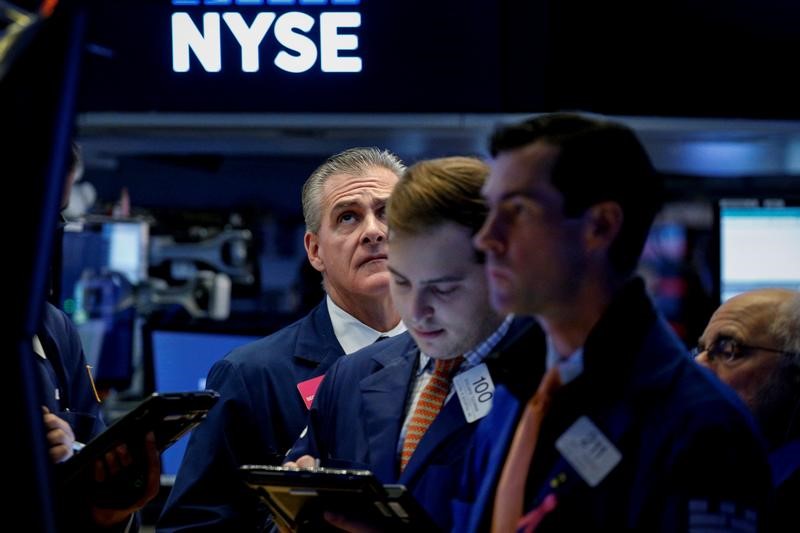Investing.com - Here are the top five things you need to know in financial markets on Tuesday, January 2:
1. Dollar starts 2018 on the back foot
In currency markets, the dollar remained out of favor having already fallen to a three month lows against a basket of the other major currencies on Friday.
The U.S. dollar index, which measures the greenback’s strength against a trade-weighted basket of six major currencies, slid 0.54% to 91.49, the weakest level since September 20.
The index ended 2017 down 9.8%, the biggest annual percentage decline since 2003.
The dollar weakened in 2017 as the global economy gained momentum fueling expectations for tighter monetary policy in other countries, which would lessen the divergence between the Federal Reserve and other central banks.
Market watchers were looking ahead to Wednesday’s minutes of the Fed’s December meeting when it raised interest rates. Two policymakers voted against the move amid doubts inflation would accelerate as hoped.
The euro hit a three-month high, with EUR/USD last at 1.2070 after a record high reading on euro zone manufacturing activity for December boosted the single currency.
2. European markets falter at start of 2018
European stocks started 2018 in the red in the first trading day of the year as auto stocks fell and metals and mining stocks reversed after a strong run up last week with gains by banks and oil companies not enough to halt declines.
European stocks failed to capitalize on a positive Asian session. Chinese equities led gains overnight as property shares surged and after a surprisingly strong reading of the country’s Caixin manufacturing index.
Meanwhile, markets in Tokyo remain closed until Thursday for Japanese holidays.
On Wall Street, U.S. stock futures pointed to small gains at the open, with Dow futures, S&P 500 futures and the tech-heavy Nasdaq 100 futures eking out small gains.
3. Oil steadies after second annual increase
Oil prices steadied on Tuesday after posting a second annual increase amid signs that a glut in global inventories is easing.
U.S. crude futures eased 0.13% to trade at $60.34 a barrel, while Brent was at $66.78, down nine cents or 0.15% from its last close.
Prices posted their strongest opening to a year since 2014 earlier Tuesday. Continued supply cuts by the oil cartel OPEC and Russia, along with anti-government protests in Iran, lifted crude to the highest levels since mid-2015.
4. Bitcoin steadies after getting off to bad start to the year
For the first time since 2015 bitcoin began the year by falling, extending its decline from record highs reached on December 18.
The digital currency had risen around twentyfold since the start of 2017, climbing from less than $1,000 to as high as $19,891 on 17 December on Bitfinex and to more than $20,000 on other exchanges.
However, it has posted heavy declines since, falling as low as $10,718 on December 22.
Bitcoin was last trading at $13,536.00 on the Bitfinex exchange, after falling to $12,810 earlier.
While bitcoin investors believe the decline was a natural correction after a breath-taking rise there have been warnings of an asset bubble from market regulators and central banks.
5. PMI data points to strong end to 2017
The euro zone manufacturing sector ended 2017 by ramping up activity at the fastest rate in more than two decades, according to data released on Tuesday and rising demand indicated that it will start the new year on a high.
The final reading of the euro zone manufacturing purchasing managers’ index jumped to 60.6 in December, the highest level since the survey began in mid-1997 from 60.1 in November.
Another report showed that China’s Caixin manufacturing index rose to a four-month high of 51.5 in December, confounding forecasts for a decline.
In the UK, data showed that the manufacturing sector expanded strongly at the end of last year, although at a slower pace than before.
The UK manufacturing PMI fell to 56.3 in December from November’s 51-month high of 58.2. Output, new orders and employment all rose at solid rates, the report said.
